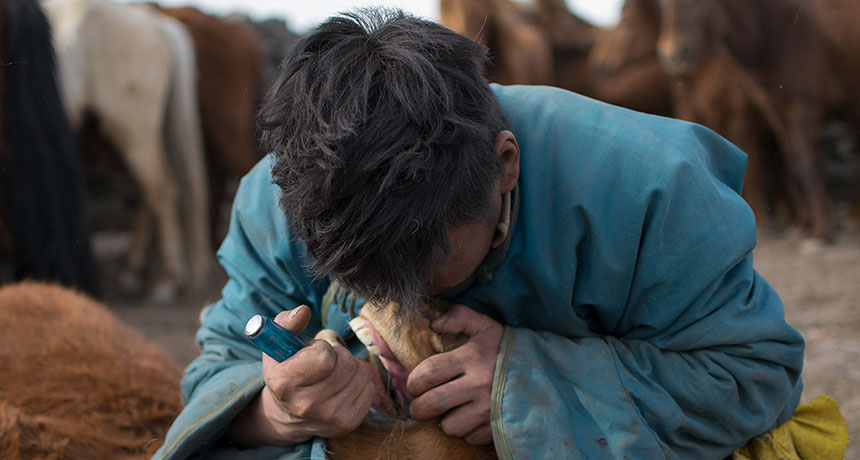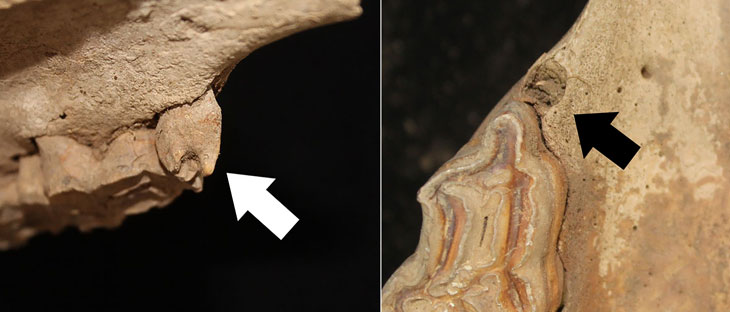Mongolians practiced horse dentistry as early as 3,200 years ago
Equine tooth extractions evolved to make way for a riding bit, making mounted warfare possible

EXTRACTION ACTION A Mongolian herder removes a first premolar tooth from a young horse using a screwdriver. Mongolian herders invented a comparable procedure nearly 2,800 years ago so that horses could safely hold metal bits in their mouths while being ridden, a new report concludes.
Dimitri Staszewski








